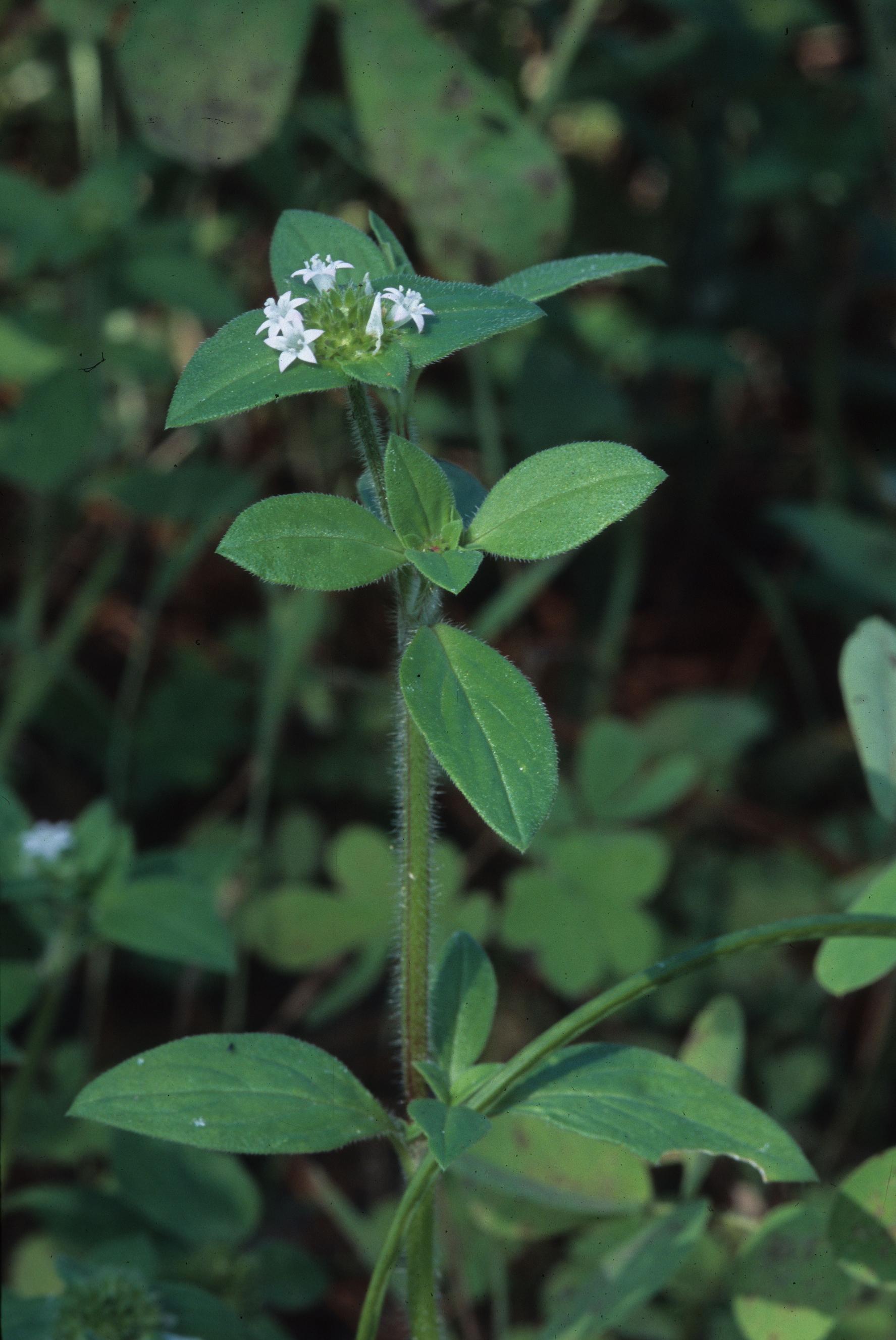Difference between revisions of "Richardia scabra"
KatieMccoy (talk | contribs) |
KatieMccoy (talk | contribs) |
||
| Line 28: | Line 28: | ||
==Ecology== | ==Ecology== | ||
===Habitat=== <!--Natural communities, human disturbed habitats, topography, hydrology, soils, light, fire regime requirements for removal of competition, etc.--> | ===Habitat=== <!--Natural communities, human disturbed habitats, topography, hydrology, soils, light, fire regime requirements for removal of competition, etc.--> | ||
| − | In the Coastal Plain region, ''R. scabra'' can be found in woodlands and upland pine communities (FSU Herbarium). It can also be found in vacant lots, roadsides, abandoned fields, powerline corridors (FSU Herbarium; Nelson 2006). It grows in fine sandy loams, that are poorly drained with slow permeability (Lewis and Harshbarger 1976). | + | In the Coastal Plain region, ''R. scabra'' can be found in woodlands and upland pine communities (FSU Herbarium). It can also be found in vacant lots, roadsides, abandoned fields, and powerline corridors (FSU Herbarium; Nelson 2006). It grows in fine sandy loams, that are poorly drained with slow permeability (Lewis and Harshbarger 1976). |
===Phenology=== <!--Timing off flowering, fruiting, seed dispersal, and environmental triggers. Cite PanFlora website if appropriate: http://www.gilnelson.com/PanFlora/ --> | ===Phenology=== <!--Timing off flowering, fruiting, seed dispersal, and environmental triggers. Cite PanFlora website if appropriate: http://www.gilnelson.com/PanFlora/ --> | ||
Revision as of 14:59, 13 October 2015
| Richardia scabra | |
|---|---|

| |
| Photo was taken by Gil Nelson | |
| Scientific classification | |
| Kingdom: | Plantae |
| Division: | Magnoliophyta – Flowering plants |
| Class: | Magnoliopsida – Dicotyledons |
| Order: | Rubiales |
| Family: | Rubiaceae |
| Genus: | Richardia |
| Species: | R. scabra |
| Binomial name | |
| Richardia scabra L. | |

| |
| Natural range of Richardia scabra from USDA NRCS Plants Database. | |
Common name: Rough Mexican Flower (Nelson 2006).
Contents
Taxonomic notes
Description
Distribution
It is observed in South Carolina Coastal Plain (Lewis and Harshbarger 1976).
Ecology
Habitat
In the Coastal Plain region, R. scabra can be found in woodlands and upland pine communities (FSU Herbarium). It can also be found in vacant lots, roadsides, abandoned fields, and powerline corridors (FSU Herbarium; Nelson 2006). It grows in fine sandy loams, that are poorly drained with slow permeability (Lewis and Harshbarger 1976).
Phenology
It blooms from June through December (Nelson 2006).
Seed dispersal
Seed bank and germination
Fire ecology
Pollination
Deyrup observed these bees, Agapostemon splendens, Augochloropsis sumptuosa, Anthidiellum maculatum rufimaculatum, Megachile mendica, M. texana, Apis mellifera, and Bombus pennsylvanicus, on R. scabra (Deyrup et al 2002).
The following Hymenoptera families and species were observed visiting flowers of Richardia scabra at Archbold Biological Station (Deyrup 2015):
Apidae: Apis mellifera, Bombus pennsylvanicus
Halictidae: Agapostemon splendens, Augochloropsis sumptuosa, Lasioglossum lepidii
Megachilidae: Anthidiellum notatum rufomaculatum, Megachile mendica
Sphecidae: Ammophila pictipennis, Cerceris tolteca, Prionyx thomae, Stictia carolina, Tachytes pepticus
Vespidae: Leptochilus republicanus, Parancistrocerus salcularis rufulus
Use by animals
Richardia scabra was heavily fed on by Gopher tortoises in agricultural areas of southwestern Georgia (Garner and Landers 1981)
Diseases and parasites
Conservation and Management
Cultivation and restoration
Photo Gallery
References and notes
Deyrup, M.A. and N.D. 2015. Database of observations of Hymenoptera visitations to flowers of plants on Archbold Biological Station, Florida, USA.
Deyrup, Mark, Jayanthi Edirisinghe, and Beth Norden. 2002. The Diversity and Floral Hosts of Bees at the Archbold Biological Station, Florida (Hymenoptera: Apoidea). Insect Mundi 16.1-3: 87-120.
Garner, J. A. and J. L. Landers. 1981. Foods and habitat of the gopher tortoise in southwestern Georgia. Proceedings of the Annual Conference of the Southeastern Association of Fish and Wildlife Agencies 35:120-134.
Lewis, C. E. and T. J. Harshbarger. 1976. Shrub and herbaceous vegetation after 20 years of prescribed burning in the South Carolina coastal plain. Journal of Range Management 29:13-18.
Nelson, Gil. Atlantic Coastal Plain Wildflowers: A Field Guide to the Wildflowers of the Coastal Regions of Virginia, North Carolina, South Carolina, Georgia, and Northeastern Florida. Guilford, CT: FalconGuide, 2006. 159. Print.